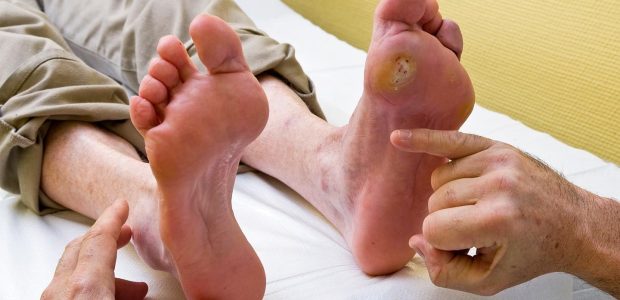
Welcome to a voyage through the intricate realm of diabetic ulcer treatment. In this comprehensive journey, we’ll delve into the market’s nuances, examine the forces propelling its growth, and acquaint you with the key players shaping its landscape. So, fasten your seatbelts as we embark on an in-depth exploration.
1. The Diabetic Ulcer Treatment Adventure Begins:
The global diabetic ulcer treatment market is no ordinary territory. It’s set to grow at an impressive Compound Annual Growth Rate (CAGR) of 8.1% from 2023 to 2031. The driving force behind this growth is the escalating prevalence of diabetes, spurred by modern lifestyles characterized by high stress levels and unhealthy habits. As diabetes becomes increasingly widespread, the demand for effective ulcer treatment rises, setting the stage for market expansion.
2. Unveiling the Arsenal of Treatment Options:
Imagine a toolkit designed to combat diabetic ulcers, with each component serving as a powerful ally in the fight for healing. This toolkit encompasses an array of options: wound care dressings, antimicrobial agents, wound care devices, and active therapies. Just as superheroes possess distinct abilities, these treatments have unique characteristics that address patient comfort and manage the intricacies of chronic diabetes-related ulcers. From soothing dressings to advanced devices, this toolkit empowers medical professionals to craft personalized solutions for each patient’s needs.
3. The Triumph of Minimally Invasive Choices:
In an era of medical innovation, patients increasingly seek treatment approaches that minimize invasiveness and maximize outcomes. This shift towards minimally invasive procedures is more than a preference; it’s a transformative trend shaping the diabetic ulcer treatment market. Patients are opting for alternatives that avoid extensive surgeries and exorbitant costs. This transition isn’t just about embracing less aggressive methods; it signifies a path to swifter recovery, diminished healthcare expenditures, and an overall enhanced quality of life.
4. A Global Expedition: Regional Insights:
While North America, particularly the United States, exerts a significant influence on the diabetic ulcer treatment market due to its substantial healthcare spending, the market’s impact transcends borders. This global expedition covers regions across continents, including Europe, Asia Pacific, Latin America, and the Middle East and Africa. The universality of diabetes and its associated complications underscores the market’s pervasive reach.
5. Riding the Waves of Change: Trends in Diabetic Ulcer Treatment:
The medical landscape is ever-evolving, and the diabetic ulcer treatment market is no exception. Emerging economies are channeling increased resources into healthcare, fostering the development of advanced facilities and care options. Additionally, the escalating hospitalization rates stemming from diabetes-related complications are driving the demand for innovative treatment strategies. These trends collectively fuel the market’s momentum, indicating that change is not only constant but a driving force behind progress.
6. Innovations and Investments: Powering Tomorrow’s Solutions:
Addressing the complex challenges posed by diabetic ulcers necessitates not just expertise but innovation. Industry players are investing in the creation of new active therapies, leading to breakthroughs like bioengineered skin substitutes and extracellular matrix proteins. These innovations are not mere additions to the market; they are transformative solutions promising improved treatment outcomes, patient well-being, and the expansion of the market’s frontiers.
7. The Heroes at the Helm: Leading the Way:
In the dynamic landscape of diabetic ulcer treatment, certain entities stand out as trailblazers. Companies like ConvaTec Group plc, Acelity L.P. Inc, 3M Company, and Smith and Nephew Plc are more than just corporate entities; they’re pioneers driving innovation, expanding capacities, and orchestrating strategic moves to redefine the market. These industry leaders are steering the ship of progress, crafting a future where diabetic ulcer treatment transcends boundaries.
FAQ – Navigating the Diabetic Ulcer Treatment Journey:
Q1. Why is the diabetic ulcer treatment market experiencing rapid growth?
The market’s growth is propelled by the increasing prevalence of diabetes worldwide. Modern lifestyles, characterized by high stress levels and unhealthy habits, contribute to the rise in diabetes cases. This surge in diabetic patients necessitates effective ulcer treatment options, driving market expansion.
Q2. What are the different treatment options available for diabetic ulcers?
The toolkit of diabetic ulcer treatment includes wound care dressings, antimicrobial agents, wound care devices, and active therapies. Each option serves a specific purpose in promoting patient comfort and managing chronic diabetes-related ulcers.
Q3. Why is the trend towards minimally invasive procedures significant?
The shift towards minimally invasive procedures is pivotal as it aligns with patients’ preferences for less aggressive treatments. This trend not only leads to faster recovery but also reduces healthcare costs, ultimately improving patients’ overall quality of life.
Q4. How do emerging economies contribute to the market’s growth?
Emerging economies are directing more resources towards healthcare, resulting in the development of advanced facilities and care options. This fosters innovation and enhances treatment outcomes, thereby driving market growth.
Q5. How are companies contributing to market innovation?
Companies are investing in new active therapies, such as bioengineered skin substitutes and extracellular matrix proteins. These innovations promise improved treatment outcomes and expand the market’s horizons by addressing the complexities of diabetic ulcers.
Q6. Who are the major players in the diabetic ulcer treatment market?
Key industry players include ConvaTec Group plc, Acelity L.P. Inc, 3M Company, and Smith and Nephew Plc. These companies are at the forefront of innovation, expanding capacities, and reshaping the market landscape.
Conclusion: A Future Filled with Possibilities:
As we conclude our immersive exploration, one thing is evident – the global diabetic ulcer treatment market is more than a realm of medical solutions. It’s a journey of growth, compassion, and hope. With the global prevalence of diabetes and patients’ quest for improved alternatives, this market isn’t merely addressing challenges; it’s turning them into opportunities for a healthier future. The horizon ahead holds the promise of a world where diabetic ulcers become not just obstacles but steppingstones towards wellness.
